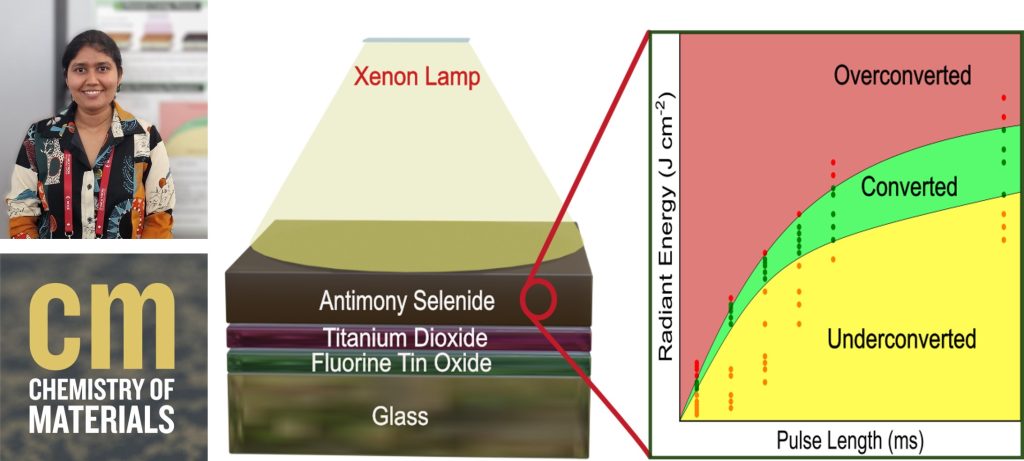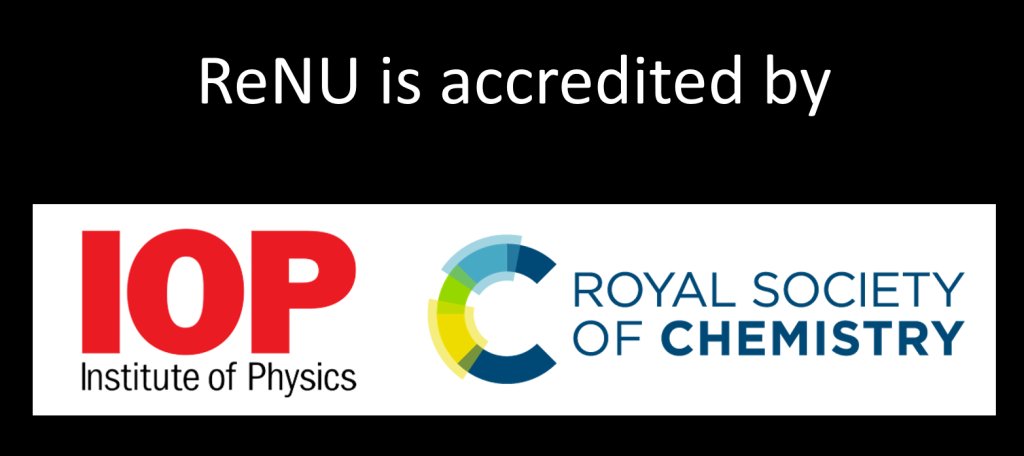New Publication in Chemistry of Materials
Udari’s (Cohort 3) latest work has been published in Chemistry of Materials and presents new insights in ‘light’ annealing of absorbing materials.

Antimony selenide is an earth abundant, low cost, low toxicity, emerging photovoltaic absorber material with rapidly improving efficiencies that has the potential to outperform established photovoltaic absorbers such as cadmium telluride. Thermal annealing is the most used postdeposition technique for antimony selenide thin films in laboratory research. However, it is incompatible with the upscaling and commercialisation of antimony selenide for the next generation of photovoltaics. In this work, a fast-annealing technique that uses millisecond light pulses to deliver energy to the sample is adapted to cure thermally evaporated antimony selenide films for the first time. We show that antimony selenide is readily converted under a variety of different conditions, but the zone where suitable films for optoelectronic applications are obtained is a small region of the possible parameter space. Photonic curing is a promising annealing method for large-area, high-throughput annealing of antimony selenide with various potential applications in antimony selenide photovoltaics, as in proven in this work with a proof-of-concept photovoltaic device.

